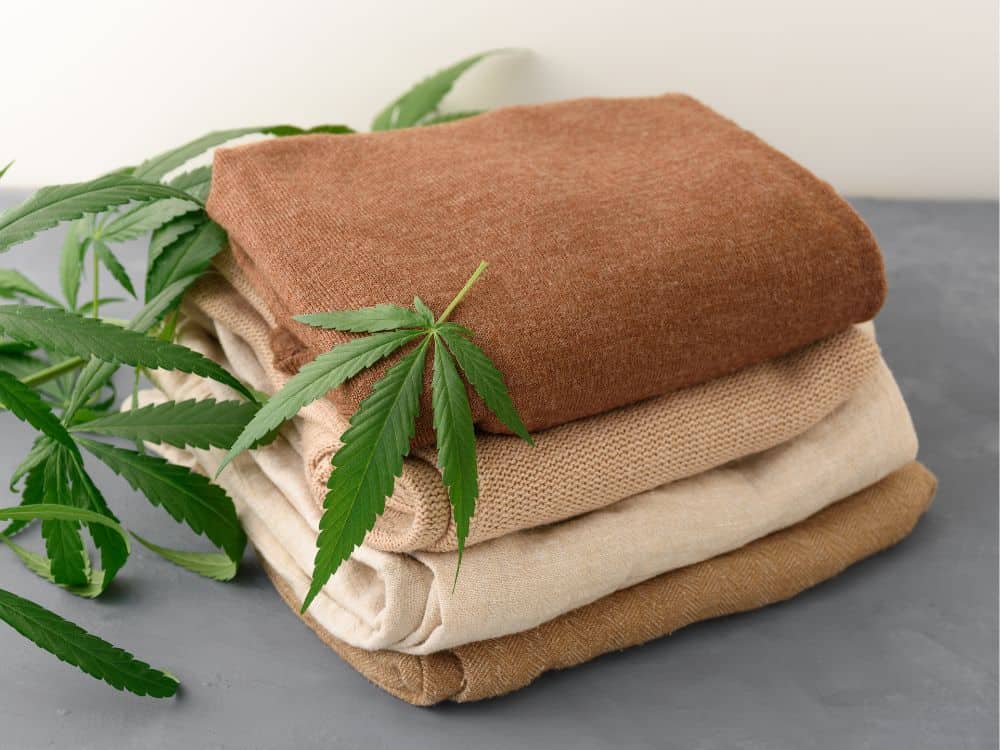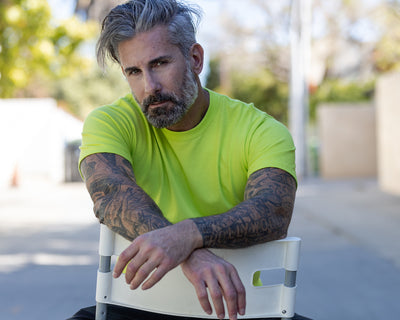Excellent Ideas To Picking Bamboo Clothes
Wiki Article
Why Is Hemp More Biodegradable And Resilient, And Regenerative Than Cotton, For Instance?
Hemp is frequently regarded as more biodegradable, durable and regenerable than cotton due to its properties inherent to it and the manner in which it is cultivated. Here's why- Biodegradability-
Natural Fiber- Hemp fibers are made from the plant which is biodegradable. Clothing and textiles made from hemp are broken down with time. The resulting waste is returned to the earth, without long-lasting consequences. This contrasts with synthetic fibres, such as polyamide, which degrade over a period of hundreds of years.
Lack of Synthetic Additives- Hemp textiles usually do not have synthetic additives or chemical treatments that hinder biodegradability. Contrary to this, some textiles are treated with synthetic chemicals, for example certain finishes or dyes, which can slow down the biodegradation process.
Durability-
Hemp fibers are distinguished by their strength and endurance. Hemp textiles, clothing, and other items are more robust than cotton. This makes hemp clothes able to stand up to many more wash cycles and wear cycles without showing indications of wear and tear.
Hemp fabric is less susceptible to pilling, which results in the formation of tiny fuzzy balls that form on the surface of the fabric. This attribute helps to improve their overall quality and durability.
Regenerative Agriculture-
Soil Health Hemp cultivation is regenerative when carried out sustainably. Hemp cultivating sustainably has a deep-rooted system that helps to stop compaction of the soil. This system of roots can also help prevent erosion. This regenerative component helps keep the soil healthier to produce future crops.
Low environmental impact Sustainable hemp cultivation methods generally use low levels of pesticides and herbicides in order to minimize environmental damage. Contrary to conventional cotton farming, its use of synthetic chemicals can lead to soil degrading and water pollution.
Water Efficiency-
Hemp grows with lower water requirements than cotton. Its drought-resistant properties mean it thrives even without irrigation, or even in conditions that are rain-fed. This makes it a great choice for areas with only a limited supply of water.
Hemp is a simple crop to incorporate in crop rotations that improve the soil's health. It also decreases the likelihood of accumulating disease and soil depletion. Cotton farming is not as prone to the effects of crop rotation.
Hemp is a flexible material which can be utilized to a variety of products, such as building materials textiles, clothing and paper. Hemp's versatility permits it to be used in a vast variety of industries, using the use of sustainable and regenerative methods.
While hemp offers these advantages however, it is important to remember that both cotton and hemp can be grown sustainably or unsustainably, depending on the practices of farming and the methods used to process them. Select hemp products that are produced using eco-friendly, ethical practices to reap the maximum environmental benefits. Organic cotton can also reduce some environmental issues that come with traditional production. Take a look at the best hemp clothes tips for website recommendations including hemp mens jeans, hemp shirts, hemp shorts mens, hemp wear, patagonia hemp overalls, jeans hemp, hemp jeans mens, patagonia ranch jacket, hemp long sleeve shirt, nomad hemp clothing and more.

What Gives Hemp Fibres Its Moisture-Wicking, Breathable And Thermoregulatory Characteristics?
Hemp fibers have unique structural and chemical properties which make them breathable, moisture-wicking, and thermoregulatory. These properties are due to the following factors. Microscopical structure Hemp is distinguished by hollow, porous fiber that allows air to flow within it. The porosity of hemp fibers makes them highly breathable. When it is woven into fabric the structure lets air flow through. This promotes circulation and prevents the accumulation of heat and moisture against the skin.
Hemp fibers absorb water and help in wicking. Hemp is hydrophilic which means it has a high affinity to water. The fibers in hemp clothing absorb sweat, moisture, and eliminate the sensation that your skin is damp. The hemp fibers also help to wick moisture away from your body by spreading the moisture across a large surface area, which makes it easier to evaporate the moisture faster. The moisture-wicking properties keep your body dry and comfortable while exercising or during the summer heat.
Hemp fibers regulate the temperature in a natural way. If it's cold, they keep the body's heat and offer warmth. In hot weather, they can help to cool you by permitting excess heat and moisture to be able to escape. The inherent thermoregulatory properties of hemp clothing allow hemp clothing to be suitable for a variety of temperatures.
Hemp fibers contain natural antimicrobial qualities that help prevent the growth odor-causing bacteria. This attribute contributes the freshness, and also odor resistance of hemp clothing.
Durable and Long-Lasting Hemp fibers are incredibly strong and durable, meaning hemp clothing is able to withstand repeated wear and washing without loosing its breathability or moisture-wicking capabilities. The long-lasting properties of hemp clothing increases its lifespan, which reduces the need to replace it as well as the environmental impact.
UV Protection- Hemp fibers provide a amount of natural UV protection, protecting the skin from harmful ultraviolet radiation. Hemp clothing can be used for a variety of purposes due to its UV blocking properties. It's ideal for activities outdoors.
These characteristics are inherent in hemp fibers, and do not depend on chemical treatments or additives. Hemp's natural properties are what make it an eco-friendly and comfortable fabric, specifically for activewear, outdoor clothing and warm-weather clothing. In addition, these attributes are maintained even when hemp fibers are processed and woven into textiles that make them an ideal choice for environmentally friendly and functional clothing. Follow the best her latest blog on hemp clothing for site advice including hemp yoga pants, hemp shirts mens, hemp and cotton fabric, hemp dress, hemp hoodie, hemp active wear, hemp shorts patagonia, hemp t shirts wholesale, 100 hemp t shirt, hemp button down shirt and more.

What Are The Advantages Of Wearing Bamboo Clothes For Wellbeing And For The Environment.
Bamboo clothing offers many benefits in terms of comfort and the environment.
Bamboo fabric is known for its softness. It's silky and smooth to the sensation. Bamboo clothing is luxuriously soft texture, making it popular for intimate wear, activewear, and loungewear.
Breathability- Bamboo fibers are naturally breathable and moisture-wicking. Micro-gaps facilitate air circulation, keeping your body cool during hot weather. The moisture-wicking qualities help to draw sweat away from the body, which reduces dampness.
Bamboo clothing has excellent properties for thermoregulation. It can help keep you warm by capturing the body heat. In hot temperatures, it will help you stay cooler by allowing the excess moisture and heat to escape. Bamboo can adjust to a variety of temperatures, it's ideal for any season.
Bamboo fabric is naturally hypoallergenic and gentle on sensitive skin. It is less likely to cause an allergic reaction or cause irritation. This makes it a great option for people with allergies and skin sensitivities.
Bamboo fibers are naturally antimicrobial and can stop the development of bacteria that produce the odor. This is a factor in the freshness and comfort of bamboo clothes even during exercising.
Environment-
Sustainability- Bamboo can be a renewable and sustainable resource. Bamboo is among the fastest growing plants in the entire world. It is able to grow with only a little water usage and doesn't need any pesticides. Bamboo can be harvested and the plant will regenerate from its roots.
Bamboo is naturally water-efficient. Bamboo can thrive even without irrigation, and is often developed by the rain alone. This helps reduce the environmental impact associated from agricultural water use.
Biodegradability. Bamboo clothes are biodegradable. They naturally decompose with time. This reduces the amount of non-biodegradable textiles in landfills.
Carbon Sequestration. Bamboo can be used to store CO2 during its rapid expansion. Bamboo cultivation is an absorber of carbon dioxide, reducing the levels of greenhouse gases as well as aiding in reducing climate changes.
Chemical Reduction. Bamboo fabric production generally requires less chemical treatment and processing than other fabrics. This means that the industry of textiles has a lower environmental impact.
Closed-Loop Processes- Some bamboo fabric processes are closed-loop that recycles water and chemical waste, while minimizing the amount of waste and pollution.
Be aware that the impact of your actions on the environment on bamboo clothing can differ depending on whether it is produced using sustainable and responsibly managed bamboo forests. To get the most sustainable results for the environment buyers should opt for bamboo clothing produced with eco-friendly and ethical methods. Take a look at the top rated look at this about bamboo clothing for blog advice including bamboo hawaiian shirts, bamboo shorts mens, bamboo newborn clothes, bamboo dress shirt, preemie bamboo pajamas, cotton bamboo pajamas, bamboo long sleeve shirt, bamboo boxer shorts, clothes made from bamboo, bamboo clothing and more.
